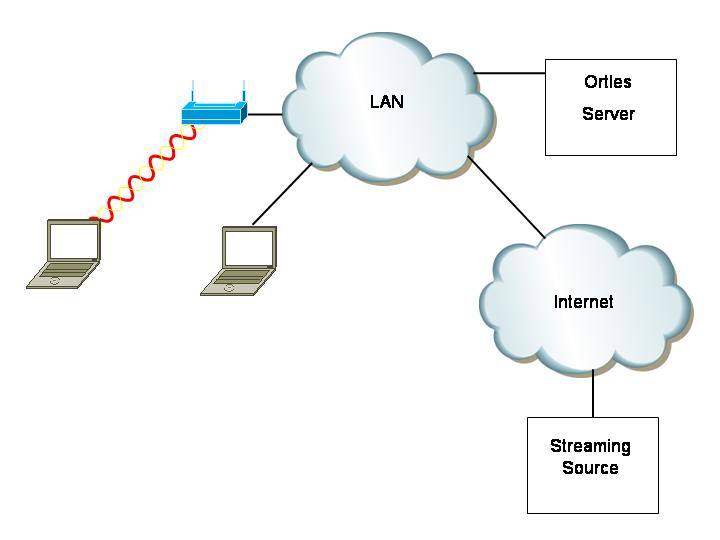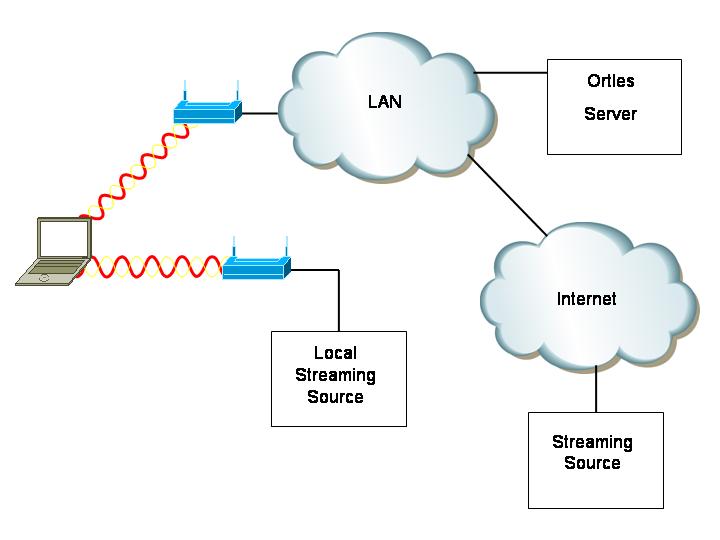
![[Inglese]](images/italy.gif) | |||
| |||
| |||
| |||
| |||
| |||
| |||
| |||
| |||
| |||
| |||
|
Area di ricerca 3 - Wireless
Questa pagina è disponibile esclusivamente in inglese
The previous tasks of the project involve wired connection over ethernet connections or fiber connections, and the aim of this third task is to show how to implement a wireless extension of the backbone network.
The wireless extension can be subjected to different experiments to evaluate its qualities and the performances.
Streaming audio/video
To show how wireless network works and its quality, we can use a testbed where are involved local and remote audio/video streaming sources. The experiment can be divided in two parts:
First part.

|
The experiment involves local and remote audio/video streaming server and at least two client machines: one connected through wireless network and one connected through wired network.
With this configuration we can estimate the degradation of service due to the use of wireless network. In this case the estimation can be done with subjective parameters (user's perception) or with objective parameters (delay, bit/packet error rate...)
For this experiment the streaming server can be:
local streaming server: the server is in the faculty LAN and the flow of packets is routed in the internal LAM;
remote streaming server: the video source is external to local LAN (Internet network).
Second part.

|
The experiment involves a local and a remote source audio/video streaming and the laptop, connected through wireless network, receives the flows.
With this configuration different measurement can be done:
on site streaming server: the user is connected directly to the AP and the flow of packets is not routed through wired network;
local streaming server: the server is in the faculty LAN and the flow of packets is routed in the internal LAM;
remote streaming server: the video source is external to local LAN (Internet network).
To avoid interference from other users, the AP should be a dedicated AP: it manages only the client (or more than one if necessary) that works for the experiment.
With this configuration we can estimate the degradation of service due to the involved wired network.
Also in this case, the quality of the service can be evaluated by subjective parameters (user's perception) or with objective parameters (delay, bit/packet error rate...).
Directional antennas
In this experiments, we can use infrastructured or ad-hoc network: the important thing is to connect the users (or the users and the BS) with antennas that have different features about gain and polar diagram.
In this case we can evaluate the performance of directional antenna in
comparison with omnidirectional antenna in building space and
the gain or the loss of the use of one or more than one
directional antennas in close space about the coverage of a single room
and the frequency reuse space.
|
Pages hosted by "IP-FLOW Group" - DIT - Università di Trento - Italy. © IP-FLOW Project 2004, All Rights Reserved. Last updated: 2008-09-10 05:37:01 |


